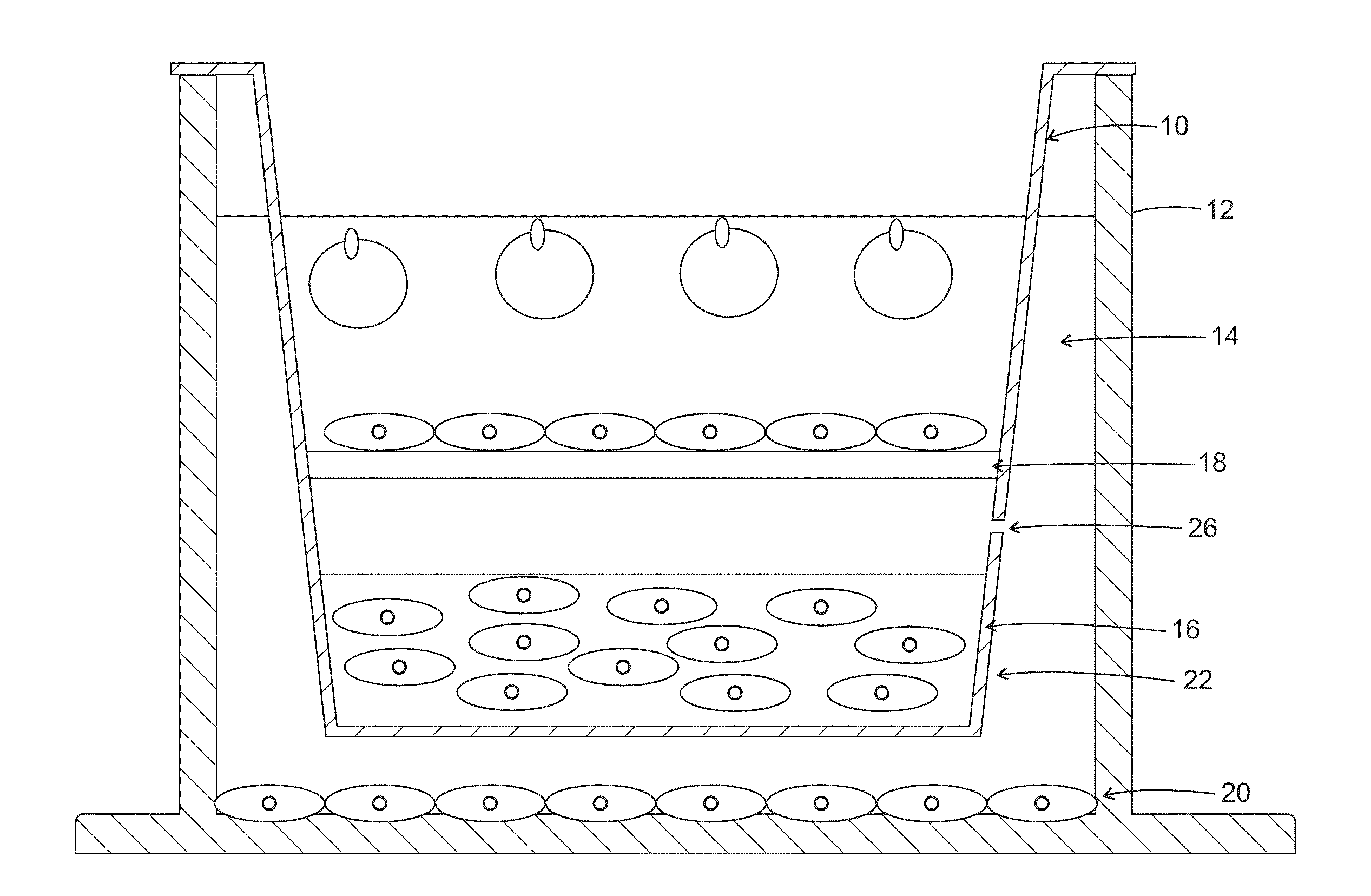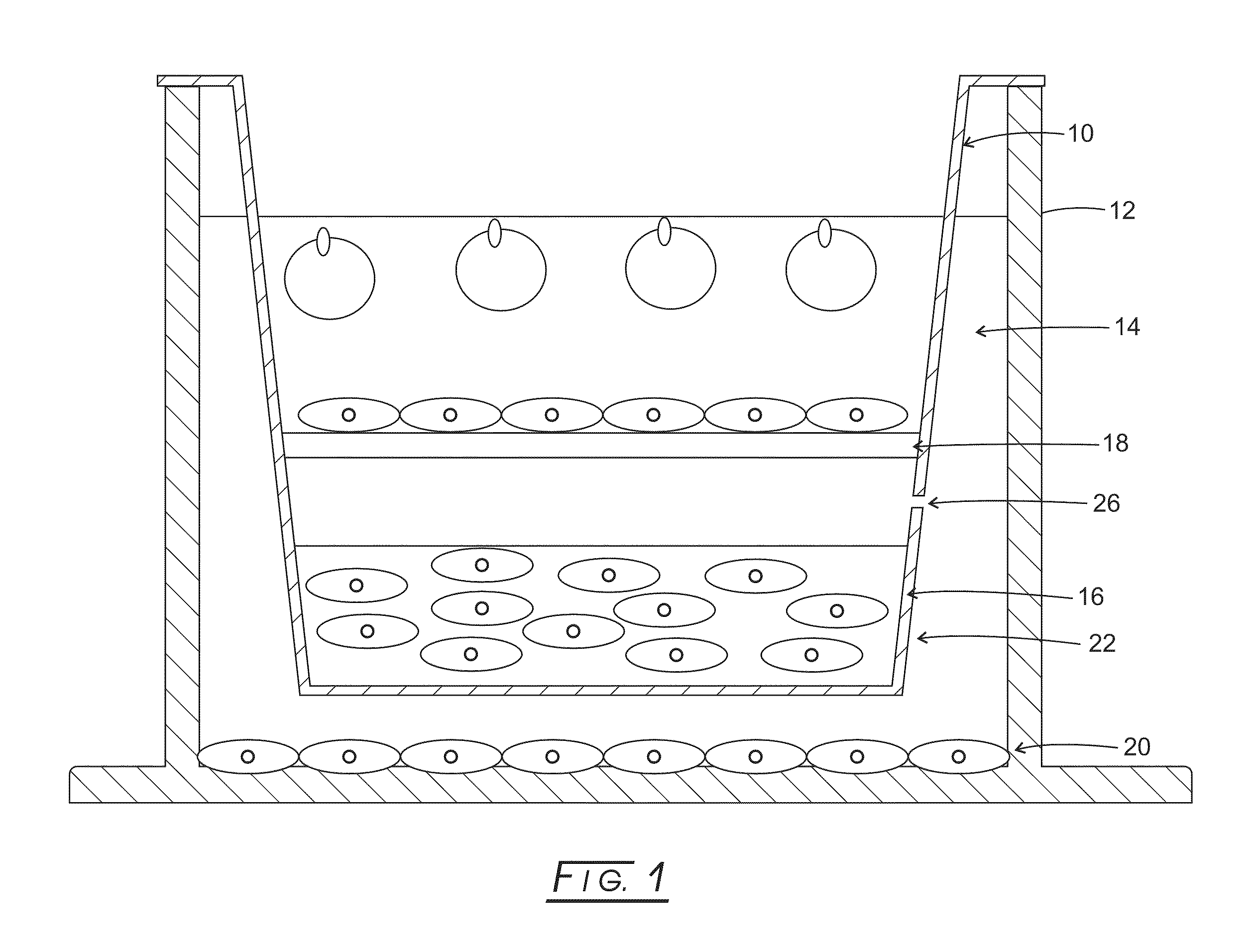Interactive Microenvironment System
a microenvironment and interactivity technology, applied in the field of multi-culture microenvironment systems, can solve the problems of inability to reproduce and rigorously deconstruct these parameters, the role of dietary influences in the dynamic interplay between tumor cells and the physical and chemical challenges around them, and the poor resemblance of in vivo topographical richness of culture environment, etc., to achieve the effect of improving alignment, increasing bioactivity, and adding bioactivity
- Summary
- Abstract
- Description
- Claims
- Application Information
AI Technical Summary
Benefits of technology
Problems solved by technology
Method used
Image
Examples
example 1
[0106]A 5 wt-% solution of polycaprolactone (PCL) in 1,1,1,3,3,3-hexafluoro-2-propanol (HFIP) solvent was prepared by continuous stirring at room temperature to dissolve the PCL. The solution then was placed in a 60cc syringe with a 20-gauge blunt tip needle and electrospun using two high voltage DC power sources. One power source was set to −11 kV and connected to a rotating wheel, the other power source was set to +14 kV and connected to the needle. A copper loop then was attached to the needle to focus the fiber towards the wheel. The distance between the needle tip and the wheel was set to 20 cm. Using a digital tachometer to measure the wheel revolutions per minute and knowing the outer diameter, the wheel surface velocity was set to approximately 15 m / s to create aligned fiber or approximately 0 m / s to create random fiber. A syringe pump was used to supply the solution from the syringe at 15 mL / hr.
[0107]Fiber was deposited directly onto the metal surface of the wheel or to a t...
example 2
Multi-Culture Embodiment Utilizing a Transwell® Insert
[0108]A commercially available Transwell® insert, like that shown in FIG. 1 or equivalent plate well inserts, may be utilized as a platform for constructing apparatuses useful in various embodiments.
[0109]One of the inherent limitations of standard electrospinning is that it typically produces cell impermeable membranes. Various embodiments overcome this limitation by spinning a high solids content fiber shown to allow full penetration by seeded cells (see references below), providing much higher cell ‘capacity’ than standard, ‘two-dimensional’ electrospun fiber. In this example embodiment, fifteen percent poly(caprolactone) (PCL, MW 65,000; Sigma-Aldrich, St. Louis, Mo.) dissolved in dichloromethane (Mallinckroff Baker, Phillipsburg, N.J.) was electrospun onto an aluminum foil—wrapped 7.6 cm×7.6 cm steel plate at −20 kV with a flow rate of 15 mL / h and a 30 cm tip-to-substrate distance. A voltage of 0 to +5 kV was gradually appli...
example 3
Aligned Fiber in MultiWell Plates
[0127]Random Fiber Preparation
[0128]An 18 wt-% solution of poly(ε-caprolactone) (Sigma-Aldrich, Inc. Mw=65,000) in acetone (Mallinckrodt Chemicals) was prepared by heating acetone to 50° C. followed by continuous stirring to dissolve the PCL. After cooling to room temperature, the solution was placed in a 60 cc syringe with a 20 gauge blunt tip needle and electrospun using a high voltage DC power supply (Glassman) set to 24 kV, a 20 cm tip-to-substrate distance and a 16 mL / hr flow rate. A 3×3″ (7.6×7.6 cm) sheet approximately 100 μm in thickness was deposited onto aluminum foil in 2 minutes. The PCL sheets were then placed in a vacuum overnight to ensure removal of residual acetone. High resolution ESI analysis (Esquire) was used to establish that the resulting acetone content is beneath our ability to detect it (less than 10 ppm) (138). Scanning electron microscopy (SEM) was used to show that, as-deposited, the fibers form a random array (FIG. 11).
A...
PUM
| Property | Measurement | Unit |
|---|---|---|
| diameter | aaaaa | aaaaa |
| diameters | aaaaa | aaaaa |
| diameters | aaaaa | aaaaa |
Abstract
Description
Claims
Application Information
 Login to View More
Login to View More - R&D
- Intellectual Property
- Life Sciences
- Materials
- Tech Scout
- Unparalleled Data Quality
- Higher Quality Content
- 60% Fewer Hallucinations
Browse by: Latest US Patents, China's latest patents, Technical Efficacy Thesaurus, Application Domain, Technology Topic, Popular Technical Reports.
© 2025 PatSnap. All rights reserved.Legal|Privacy policy|Modern Slavery Act Transparency Statement|Sitemap|About US| Contact US: help@patsnap.com



